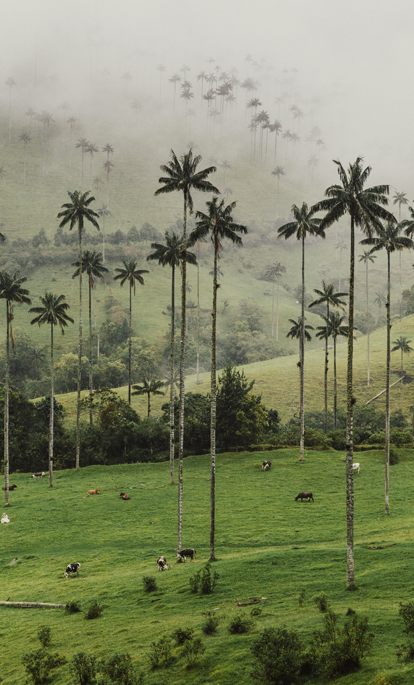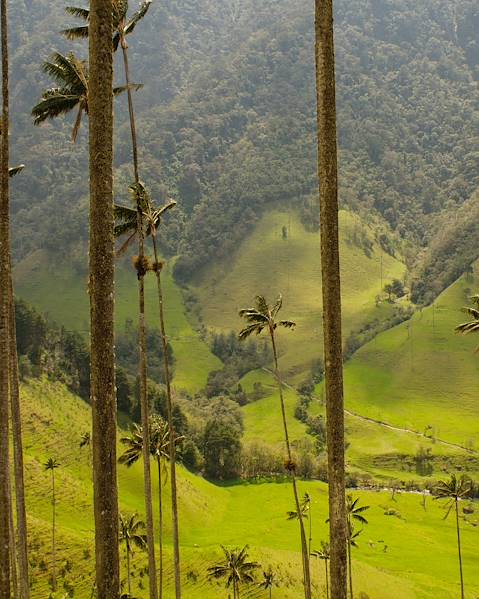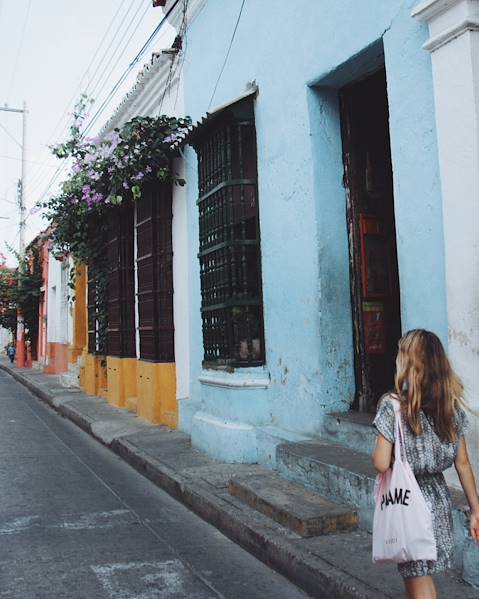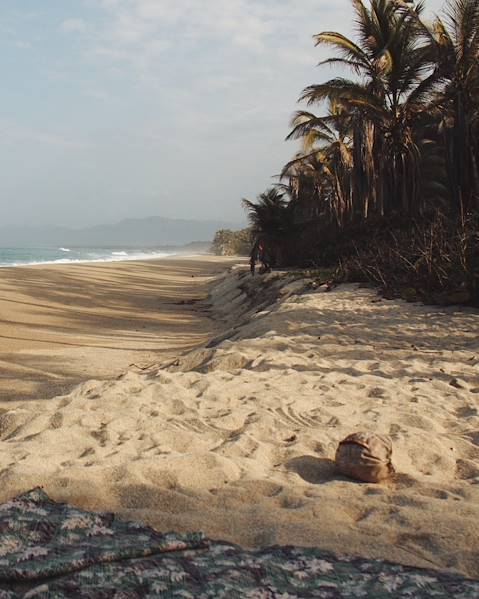Colombia’s notorious reputation precedes it, however in recent decades this image has been thoroughly transformed, as summed up by the local saying, 'the only risk is wanting to stay'. With colourful cities, a tropical Caribbean coastline and lush rainforest region, it’s easy to see why Colombia has fast become one of South America’s (and the world’s) most sought-after destinations. If you wish to explore this extraordinary nation, read on for our guide of things to know before visiting Colombia…
Climate & Weather
Colombia is a country of diversity in many respects, especially when it comes to the climate and weather. Generally, the weather can be divided into two seasons: the dry season, which spans from December to February and July to August, and the rainy season, which occurs from April to May and from October to November. Colombia’s climate largely depends on the region and altitude that you’re visiting. The Amazon and Caribbean regions have a tropical climate, with average temperatures ranging between 23 and 27°C, while the Pacific region sees more rainfall and the Andean region can get quite cold during the winter months. The higher altitude regions have lower temperatures, dropping below 10°C above 10,000 feet, and you’ll find snow in regions above 15,000 metres.
Currency in Colombia
The local currency is the Colombian Peso (COP$), with denominations in mil (Spanish for thousand). It’s a good idea to exchange some cash before arriving, to ensure you get the best rates. Most places will also accept card and there are ATMs in the cities for withdrawing extra cash, so bringing an international card with no transaction fee is recommended. Be mindful of where you store your money and be careful about keeping it safe. Prices in restaurants are fixed but in shops and at markets it’s acceptable to barter for goods and negotiate prices. Tipping isn’t compulsory, although it is appreciated and a tip of 10% may be included on the bill at some restaurants.
Food & Drink in Colombia
Colombian cuisine features a blend of European and indigenous ingredients, with meat, potatoes, beans, corn and rice forming the basis of many dishes. There are a few staple recipes which are worth trying, including bandeja paisa (rice, plantain, avocado, minced meat and fried pork rind, topped with a fried egg), ajiaco (a soup made with chicken, potatoes and Colombian herbs) and cazuela de fríjoles (red bean stew). Arepas (flatbreads made of ground maize, sometimes filled with cheese) and empanadas (meat or cheese stuffed deep fried pastry) are popular street food offerings, with stalls found on many street corners. Chocolate santafereño (a combination of hot chocolate and melted cheese) is a popular snack found in Bogotá, while along the Caribbean coast you’ll find plenty of fresh seafood and fruit. There are a number of unusual fruit varieties, such as maracuyá (similar to passion fruit), feijoa (with a bubble-gum-like flavour) and curuba (likened to a combination of peach and strawberry). Aguardiente (meaning ‘firewater’) is the national alcoholic drink of Colombia, made from sugar cane and anise. Colombia is also renowned for its world-class coffee and the palm-studded coffee region is definitely worth visiting if you’re a coffee-connoisseur.
The tap water in the main cities (Bogotá, Medellín, Cartagena and Cali) and the mountainous regions of Colombia is generally safe to drink, however in more rural areas and smaller towns, its advised to stick to bottled or filtered water. Bringing a filtered water bottle is a good idea, to avoid plastic bottle waste.
Transport in Colombia
Domestic flights are the best option for travelling between cities, as they’re inexpensive and quick. Public transport is the easiest way to get around the cities – Medellín boasts the best public transport, with its extensive metro and cable car system, while Bogotá’s only form of public transport is buses. Taxis offer one of the safest forms of transport, although be sure to use registered companies and avoid unlicensed street taxis. Downloading Uber or the Cabify app is an easy way to ensure taxis are legitimate.
Language in Colombia
Spanish is the most common language in Colombia, spoken by more than 99.5% of the population. A large proportion of Colombians do not speak English, so although you can travel here without being fluent in Spanish, it’s a good idea to know some basic words and phrases to help you get around and communicate with locals.
Etiquette in Colombia
Avoid mentioning the Netflix show Narcos or discussing drug taking while travelling in Colombia. The country has undergone an incredible transformation, and residents (particularly in Medellín) do not appreciate the country’s continued association with drug cartels and cocaine use. It’s also respectful to avoid any Pablo Escobar tours, as the drug-war years form a contentious and sensitive part of Colombia’s history.
Safety in Colombia
Colombia has experienced great social and political regeneration in recent decades and is now generally safe to travel around. It is still recommended to stick to the beaten track, however, as some rural regions along the borders with Panama, Venezuela and Ecuador remain dangerous due to their links with neo-paramilitary and drug-trafficking organisations.
The Colombian phrase no dar papaya (literally translating to ‘don’t give a papaya’) means ‘keep your wits about you’ and don’t make yourself an easy target. Be aware of the impression you give off while travelling, remain attentive to your belongings in busy cities and avoid using your mobile phone in the street. As in any foreign country, use common sense; don’t wander the streets after dark or head to unknown neighbourhoods without researching their safety first, and don’t flaunt any expensive possessions or jewellery. Unfortunately muggings remain an issue in Colombia, so be sure to have travel insurance for your belongings and get taxis home after dark, even if you don’t have far to walk to your hotel. A common tactic is for scammers to pose as police officers and ask to see your money or passport – real police officers won’t request this, so be cautious of people approaching you in the street or trying to distract you. Don’t resist if you are robbed and head to the nearest police station to report the crime.
Must-sees in Colombia
Colombia is jam-packed with things to see and do, so it would be difficult to tick-off everything in one trip and you’ll likely want to return for more. Here are a few ‘must-sees’ to get you started:
- Cartagena’s Old Town – the enchanting Caribbean coast is an essential part of any Colombia itinerary, and the walled town of Cartagena, with its pastel-coloured porticos and charming cobbled streets, is a particular highlight.
- Medellín, Bogotá and Cali – shedding their once notorious reputations, Colombia’s three main cities are now lively hubs of culture, art and cuisine, well worth exploring to learn more about the country, sample authentic food and take part in the salsa dancing tradition.
- Tayrona National Park – located close to the city of Santa Marta on the Caribbean coast, Tayrona boasts both breath-taking beaches and dense rainforest.
- Salento and Valle del Cocora – the Andean town of Salento is known for its coffee plantations and lush surroundings. Combine a visit to the colourful town with hiking through the Valle del Cocora, famed for having the world’s tallest palm trees.
- La Ciudad Perdida (‘The Lost City’) – constructed 650 years before Machu Picchu, the Lost City can be reached via a 27-mile trek through the rainforest.
- Rosario Islands – a collection of 27 islands off the Caribbean coast, the islands can be reached by boat from Cartagena and offer excellent snorkelling and diving opportunities.
- Guatapé – about 50 miles from Medellín you’ll find the vibrant town of Guatapé and El Peñól de Guatapé, a 650ft rock towering out of the surrounding flat land. Climb the rock for incredible views of the extensive network of rivers and lakes, backed by mountains.
Things to Bring to Colombia
Colombia’s position close to the equator means it’s essential to bring sun cream, a sunhat and sunglasses to avoid getting sunburnt. Insect repellent is also a good idea, especially if travelling to the rainforest. It’s advisable to bring enough with you, as these products can be expensive to purchase once there. Good walking shoes are essential for exploring both the cities and mountainous areas, while a rain jacket is useful in case of unpredictable weather.
















